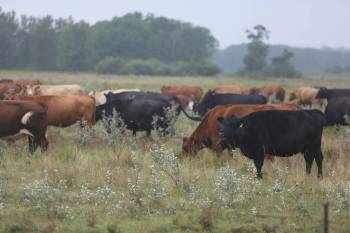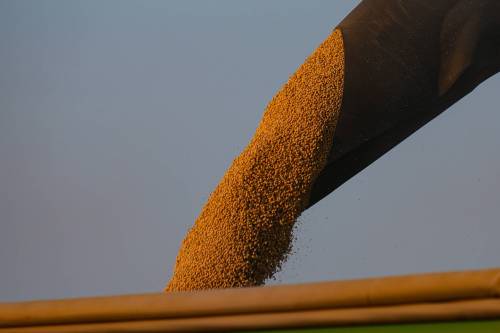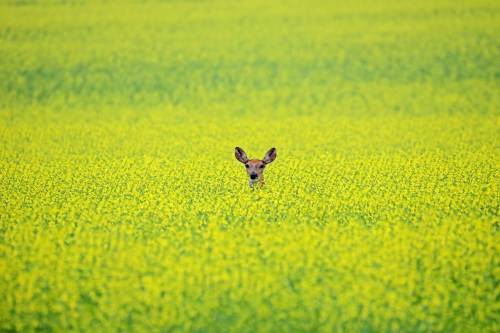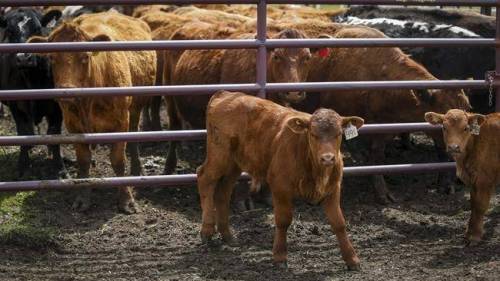Agriculture
Cattle ranchers rattle fences after Trump opens U.S. gate to Argentina
5 minute read Saturday, Oct. 25, 2025There aren’t many politicians — not even U.S. President Donald Trump — who could get away with claiming credit for pushing beef prices to historic highs while at the same time telling producers they need to drop their prices.
“The Cattle Ranchers, who I love, don’t understand that the only reason they are doing so well, for the first time in decades, is because I put Tariffs on cattle coming into the United States, including a 50 per cent Tariff on Brazil. If it weren’t for me, they would be doing just as they’ve done for the past 20 years — Terrible! It would be nice if they would understand that, but they also have to get their prices down, because the consumer is a very big factor in my thinking, also!” Trump posted on his Truth Social account this week.
He’s not getting away with it. Not this time.
The post — which characteristically was not rooted in facts — coincided with his decision to quadruple the volume of Argentinian beef allowed into the U.S. tariff-free. The cattle futures market tumbled and producer organizations were fuming.
Advertisement
Crop price only 1 piece of farmers’ marketing puzzle
5 minute read Preview Saturday, Oct. 11, 2025No easy answers for farm nutrient management equation
5 minute read Saturday, Oct. 4, 2025Farmers took full advantage of the windy, hot weather this week to chip away at harvest. They had about three-quarters of the province’s crop in their bins just as October arrived with a cooler, wetter forecast.
But it hasn’t been easy, as evidenced by the deeply rutted fields in areas that received heavy rains two weeks ago. There has been no shortage of anecdotal reports of “rescue” operations, where an individual operation’s harvest was waylaid by the need to extract equipment mired in the mud.
Wet soils beneath a thick canopy of ripe crops also add up to quality losses. While much of the early cereals harvested this fall have ranked in the top grades, some fields where harvest was delayed by rain resulted in grain that was downgraded to livestock feed, which is a major hit on pricing.
The unusually warm day and night-time temperatures have also created headaches harvesting potatoes. The optimum temperature range for putting potatoes into storage is between 7 C and 15 C. Harvest when spuds are too cold and they bruise; storing them when they are too warm increases the risk of diseases that cause rot. At this time of year, the shift from one extreme to the other can happen overnight, so the window of opportunity is narrow.
‘Opportunity to celebrate’: province opens MASC offices in Virden, Shoal Lake
3 minute read Friday, Sep. 19, 2025VIRDEN — A pair of Manitoba Agricultural Services Corp. offices — closed in 2021 under the Progressive Conservative government — have been reopened in Westman.
Agriculture Minister Ron Kostyshyn visited Virden on Friday for a ribbon-cutting ceremony at one site, with the other opening in Shoal Lake.
“It’s definitely an opportunity to celebrate,” Kostyshyn said.
The two new MASC office locations will provide in-person services for clients in the agriculture industry.
Canadian farmers facing harvest cash-flow crunch, talking support
5 minute read Saturday, Sep. 13, 2025Canadian farmers are understandably disappointed the federal government’s response to China’s punishing import tariffs on canola, pork, peas and seafood hasn’t so far included direct compensation.
After all, the duties are widely seen as retaliation for Canadian tariffs effectively locking Chinese electric cars out of the local market — a policy decision that had nothing to do with agriculture. This is the second time in recent memory China has targeted Canadian farmers to score points on unrelated issues. It’s unlikely to be the last.
While the full impact remains unclear, when Canada’s second-largest canola customer imposes tariffs of 75.8 per cent on seed and 100 per cent on oil and meal, it’s a safe bet demand will be curbed and prices will be lower than they would have been otherwise. Industry estimates place the eventual costs in the range of $2 billion.
However, commodity prices this year are depressed across the board — for a host of reasons. Much of the new-crop canola has yet to be harvested and very little has been sold.
Kinew calls for Ottawa to help canola farmers hurt by China’s tariffs
4 minute read Preview Wednesday, Aug. 13, 2025Manitoba agricultural firm building two new facilities
3 minute read Preview Wednesday, Aug. 6, 2025Taking on tomorrow’s taters: U of M research chair’s focus is on sustainable spuds
2 minute read Tuesday, Aug. 5, 2025The University of Manitoba has created a special research position dedicated to sustainable spuds.
Linda Schott is the province’s inaugural research chair in potato sustainability, U of M announced in a news release Tuesday.
Schott has been tasked with studying soil productivity, irrigation, disease management and variety development.
“We envision the University of Manitoba becoming a school of choice for students and researchers passionate about the sustainable production of potatoes,” Martin Scanlon, dean of the faculty of agricultural and food sciences, said in a release.
Ottawa, province tab $6M for 19 Manitoba food-sector firms
4 minute read Preview Wednesday, Jul. 23, 2025Drought aid announced for Interlake farmers
3 minute read Wednesday, Jul. 23, 2025The federal and provincial governments have launched drought support for livestock producers who are coping with parched pasture land and hungry cattle.
The hot, dry summer is limiting pasture growth crucial for feeding livestock. Such conditions prompted some Interlake municipalities to declare agricultural emergencies, including Armstrong, Coldwell, St. Laurent and Woodlands.
In response, Manitoba Agricultural Services Corp. will provide funding through its AgriInsurance program and expedite claim payouts so producers can quickly source livestock feed, the governments said in a joint news release. The program, which protects against shortfalls and losses caused by natural events, will include a slate of “practical changes,” Manitoba Agriculture Minister Ron Kostyshyn said in a statement Wednesday.
Those include reduced yield appraisals for drought-stricken crops, deferred premium deductions for forage insurance and partial payments on forage claims, he said.
Drought forces Interlake RMs to declare emergencies; cattle inductry threatened
3 minute read Preview Friday, Jul. 18, 2025Innovation Farms network grows by 6K acres
1 minute read Tuesday, Jul. 15, 2025A Manitoba research farm is expanding by 6,000 acres, with a large swath dedicated to potatoes.
JP Wiebe Ltd. in MacGregor has joined the Innovation Farms network. Potato crops cover roughly 2,600 acres of its operation.
Enterprise Machine Intelligence and Learning Initiative (EMILI) already oversees research at a 5,500-acre commercial farm in Grosse Isle as part of Innovation Farms.
The MacGregor addition will allow for testing of technologies growing potatoes and related crop rotation and irrigation, EMILI announced, alongside representatives of Farm Credit Canada, on Tuesday.
Digital agriculture languishing in Canadian fields
5 minute read Preview Saturday, Jul. 5, 2025Waving Canadian flag on two-way street of trade
5 minute read Saturday, Jun. 28, 2025I gave up my Friday night pizza dates with Tom Gore around the same time Donald Trump started his trade war with Canada.
It was a forced breakup, but I didn’t mind. Tom was my favourite wine until it was pulled from liquor store shelves as part of the federal and provincial governments’ response to the imposition of tariffs on U.S. imports from Canada.
There’s been so much background noise in the aftermath that it’s been hard to keep track. All I know is Tom and all his California cohorts are still in exile, and the alternatives I’ve found are such that I don’t miss them.
Apparently, I’m not alone. Sales of U.S. wine to Canada are, by some accounts, down 94 per cent, and sales of Canadian alcoholic beverages are up, probably the most noticeable effect of our collective disenchantment with our largest trading partner.
AmericasAgForum2025 seeks co-operation on weighty issue of food security
5 minute read Preview Saturday, Jun. 21, 2025Promising alternatives highlighted in U of M study of cropping systems
4 minute read Preview Saturday, Jun. 14, 2025LOAD MORE










